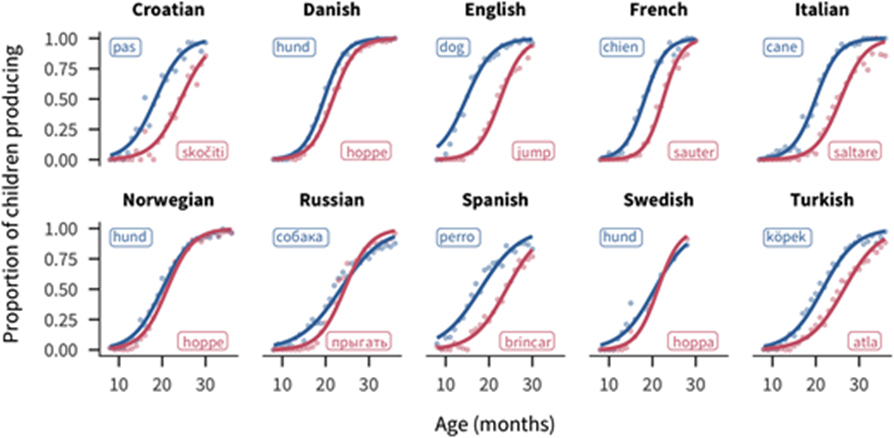11.8: First Words
- Page ID
- 140570
Word Development
Most infants produce their first word sometime around their first birthday, with over 75% doing so before twelve months of age (Schneider, Yurovsky & Frank, 2015). Despite tremendous individual variation in children’s rate of development (Fenson et al., 2007), the first words that they utter are strikingly consistent (Schneider, Yurovsky, & Frank, 2015; Tardif et al., 2008): they tend to talk about important people in their life (“mom,” “dad”), social routines (“hi,” “uh-oh”), animals (“dog,” “duck”), and foods (“milk,” “banana”). Even as children learn from their own experiences and according to their own interests (Mayor & Plunkett, 2014; Nelson, 1973), their vocabulary grows rapidly, typically adding more nouns, but also verbs (“go”) and other predicates (“hot”) to their repertoires. Figure \(\PageIndex{1}\) shows when the proportion of children between 10 to 30 months of age, across various languages, begin producing the word “dog” and “jump” in their native language. The higher the dots on the chart, the higher the proportion of children, at that specific age, are producing the word. What similarities and differences across languages do you notice? Over just their first 3 years, children learn hundreds, even thousands of words (Fenson et al., 1994; Mayor & Plunkett, 2011). [1]

[1] Braginsky et al., (2019). Consistency and variability in children’s word learning across languages. Open Mind, 3, 52-67. CC by 4.0

